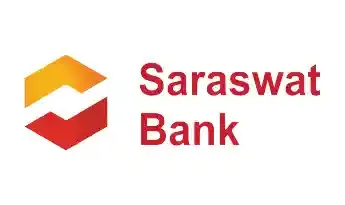Get instant loan offer suitable to your profile !


On this Page:
Explore Ph.D. education loans to study abroad, covering eligibility criteria, collateral vs. non-collateral loans, private lenders, NBFCs, and repayment strategies.
While the ph.D. is actually an academic pursuit, it is more than just research and innovation for a long time in a discipline chosen for advanced work. Unlike undergraduate or even master's degrees, Ph.D. programs typically take 3-7 years to complete, during which time the students are not only attending classes but also conducting extensive research, publishing papers, and sometimes even teaching. The extended duration and the specialized nature of this program can well make the cost of a Ph.D. higher compared to other degrees.
After tuition and other fees, Ph.D. students often have additional costs, which include research spending, travel for conferences, and living expenses while living abroad for several years. Many of these students are also required to support families or dependents. Unlike undergraduate students, often, a Ph.D. candidate becomes ineligible to work part-time due to extreme academic pressure. In such a scenario, acquiring a properly structured education loan is critical.
In this blog, we’ll explore various loan options for Ph.D. students who want to study abroad, covering everything from public and private sector banks and private lenders to international loan providers.

Pursuing a Ph.D. abroad involves substantial expenses that go beyond tuition fees. Unlike shorter programs, Ph.D. students need to budget for several years of study and research-related costs. Here’s a breakdown of the typical expenses:





Pursuing a Ph.D. abroad can be expensive, but education loans are available to ease the financial burden. Here's a summary of the typical eligibility criteria for securing a Ph.D. education loan for studying abroad:




















Ph.D. candidates usually require loans at various stages of their program:
1. Initial Admission: At the time of admission, students need to cover tuition fees, relocation expenses, and initial setup costs (e.g., accommodation, travel).
2. During the Course: For ongoing research, students often need financial aid to cover conference participation, fieldwork, publishing fees, and lab equipment.
3. Post-Course Completion: Some Ph.D. programs might include a period of post-completion thesis writing, during which students need financial assistance until they secure employment.

Pursuing a Ph.D. abroad often requires significant financial investment. While there are various loan options available, education loans with collateral, also known as secured education loans, are among the most popular for large loan amounts and are offered by public banks. Collateral-backed loans provide better interest rates and higher loan limits, making them an attractive option for students who need substantial funding.
| Lender Name | Maximum Loan Amount | Rate of Interest | Margin Money |
|---|---|---|---|
|
INR 1.5 Cr |
11.15% (Floating) |
INR 7.5 Lakh-INR 20 Lakh - 15% INR 20 Lakh - 10% |
|
|
Up to INR 1.5 Cr |
Secured loans:
|
Secured loans:
|
|
|
Up to INR 1.5 Cr |
9.70% - 11.15% (Floating) |
15% |

Pursuing a Ph.D. abroad can be a costly affair, but not every student has the assets to pledge as collateral. Thankfully, many banks and financial institutions offer education loans without collateral, also known as unsecured education loans, making it possible to fund your Ph.D. studies without the need to pledge property or other assets.
| Lender’s Name | Maximum Loan | Rate of Interest | Margin Money |
|---|---|---|---|
|
10.75% - 11.5% |
5% (on all categories, need to show proof prior) |
|
|
Up to 1.5 Cr |
10.99%-11.25% |
0-15% |
|
|
Up to 70 Lakhs (depending on category and country) |
Starting from 10.75% (depending on category and country) |
NIL |
|
|
11.25% - 12.75% |
- |
| Lender Name | Maximum Loan Amount | Rate of Interest | Margin Money |
|---|---|---|---|
|
INR 25 Lakh |
12% - 12.75% |
NIL |
|
|
INR 20 Lakh |
12.5% - 13.5% |
NIL |
|
|
INR 20 Lakh |
12.5% - 13.5% |
NIL |
|
|
INR 20 Lakh |
12.5% - 13.5% |
NIL |
|
|
11.5% - 12.75% |
NIL |

When applying for a Ph.D. education loan to study abroad, submitting the correct documents is crucial to ensure smooth processing. Different banks and financial institutions may have slightly varying requirements, but here’s a list of the common documents typically needed:
Proof of Admission:


Academic Documents:


Personal Identification:


Check Your Education Loan Eligibility

Ask from a community of 10K+ peers, alumni and experts
Trending Blogs
Similar Blogs

Network with a community of curious students, just like you
Join our community to make connections, find answers and future roommates.. Join our CommunityCountry-Wise Loans
Best Lenders for Education Loan

ICICI Bank

Axis Bank

Union Bank

Prodigy

Auxilo

Credila

IDFC

InCred

MPower

Avanse

SBI

BOB

Poonawalla

Saraswat